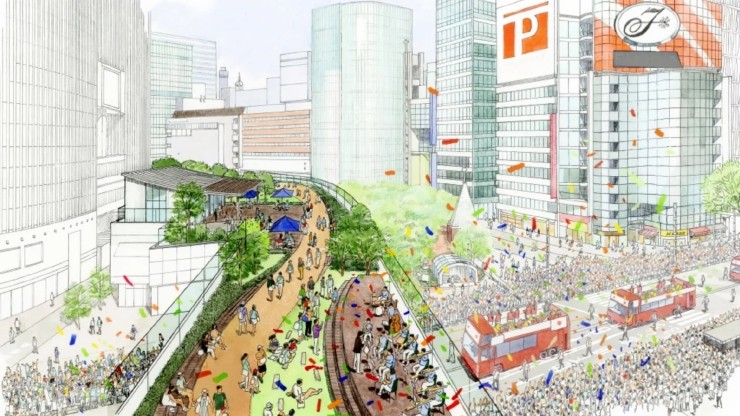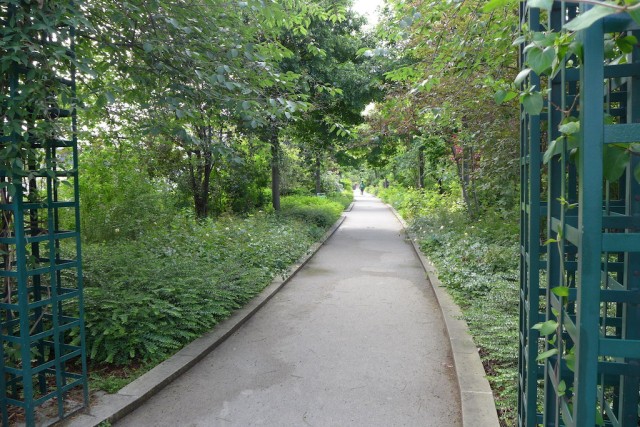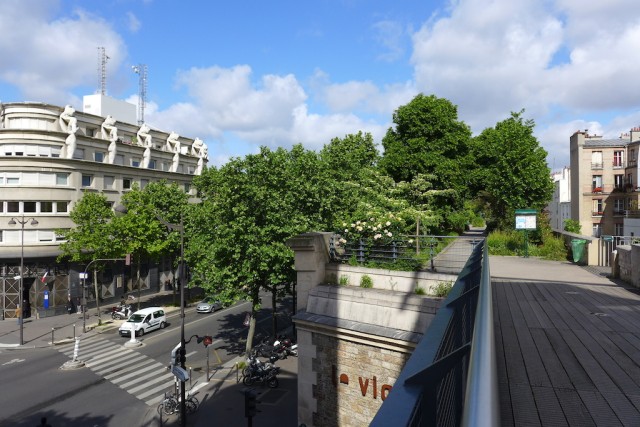
A friend of mine — also an avid reader of The Economist magazine — and I used to joke that articles in that magazine often end in a responsibility-free admonishment along the lines of, “Somebody should do something about this.”
Recurring readers of this blog will smile that I’m guilty of this behavior too, I admit it. Most recent evidence is my piece about how Japan should consider modeling itself after France when it comes to growing it’s venture capital ecosystem.
Reading this article on on a flight back from Paris to Tokyo (Tokyo highway seeks new life as NY-style park in the sky), it dawned on me that the former city could be an inspiration for my destination city in another interesting area: the Promenade Plantée.
A 4.5km foliage-covered pedestrian path, the Promenade Plantée spans from Paris’ Place de la Bastille all the way to Vincennes on the city’s eastern limits. The City of Paris constructed the Promenade Plantée back in 1988 over a former railway line. Its central stretch sits over the viaduct des arts, ten meters above a series of design shops and galleries. The eastern two-thirds then opens into dual pedestrian and cycling paths, perfect for sports enthusiasts to shortcut the city en route to the lush Bois de Vincennes.


It is heartening to see that the city of Tokyo under the Governor Koike-san has launched plans to transform a stretch of the two-lane elevated freeway that bisects Ginza and the Yurakucho district of central Tokyo into a pedestrianized park, apparently inspired by New York’s High Line. This project fits within a larger vision to create more green spaces across the city.
If I may proffer my unsolicited advice to the Tokyo metropolitan government (remember: you get which pay for, and this advice is free) it would be the following: Before overhauling a major traffic artery in a central business/shopping district, consider what the metropolis of the future could look like.
It’s no secret that urban centers globally are grappling with the disruptive impact of innovation in the transportation sector over the past decade, beginning with on-demand taxi services, then bike-sharing schemes, and now electric scooters. Forgive me for stating the obvious, but roads and sidewalks alone are not enough to handle these new modes of mobility.
Cities throughout northern Europe, take Amsterdam as perhaps the most well-known example, are arguably the best equipped to handle increased traffic on two-wheels. Tokyo, in contrast, is definitely not, at least not yet.
Paris wasn’t so well-equipped either 10 years ago, but over the past decade the city has undergone dramatic remodeling thanks to a persevering mayor. I would argue that Paris represents a relevant additional example for Tokyo to follow because the starting conditions were similar: heavy congestion in central areas, objections from powerful special interests, nothing but roads and sidewalks apart from the occasional bike lane streaking narrowly alongside automobile traffic, and yet a climate conducive to year-round cycling. (In contrast, I did find Parisian automobilists to drive far more hurriedly, recklessly, and with haphazard parking habits than their Tokyo counterparts. And yes, I acknowledge that I’m making a sweeping generalization here but it is my opinion).
The urban reconstruction in Paris still remains very much an undergoing effort. However, already as I return to the city in regulars intervals, I see snapshots of dramatic progress. Today, many of Paris’ main congested arteries contain distinct bike paths, separated from heavy traffic by small concrete spacers. Cycling in downtown Paris has ceased to be a high-stakes exercise in injury-avoidance.
Undoubtedly, the Parisian urban makeover has been frustrating for drivers. Although they do not have my empathy, they do have my sympathy. But I can personally attest that the quality of life and last-mile mobility in Paris has taken a turn upward.
I look forward to watching Tokyo evolve similarly as a city of the future.
